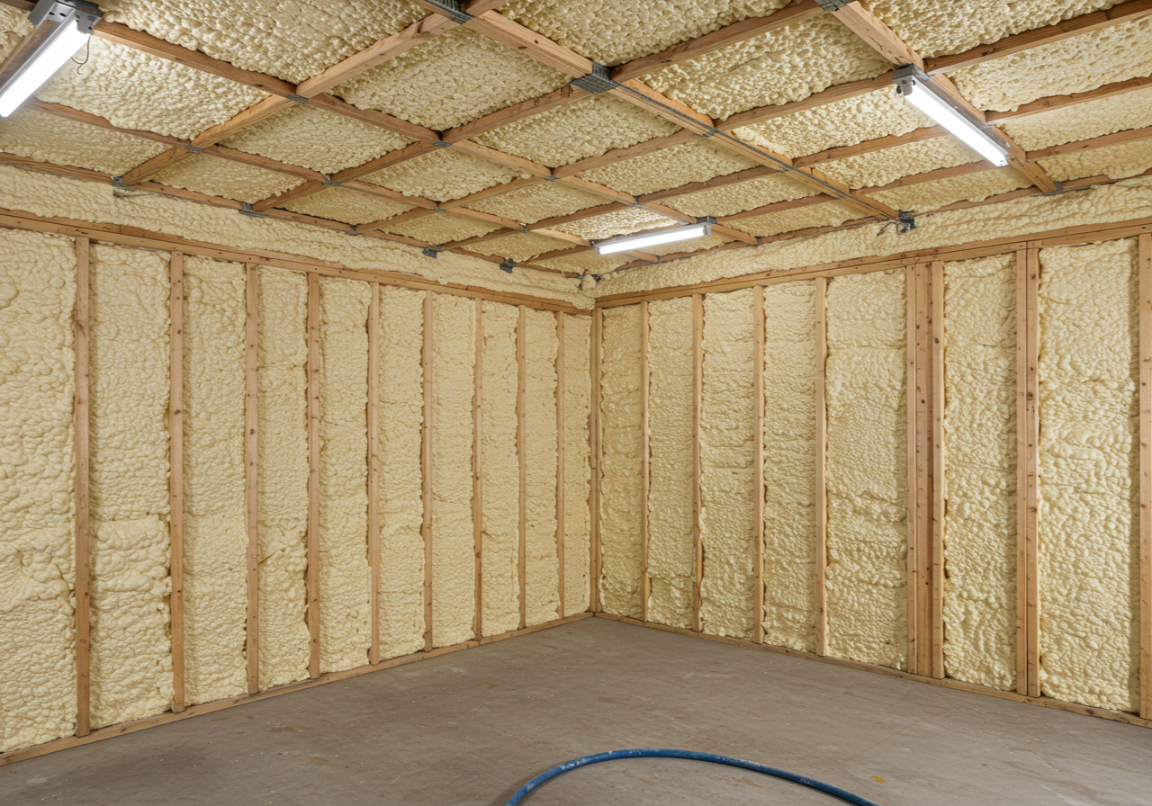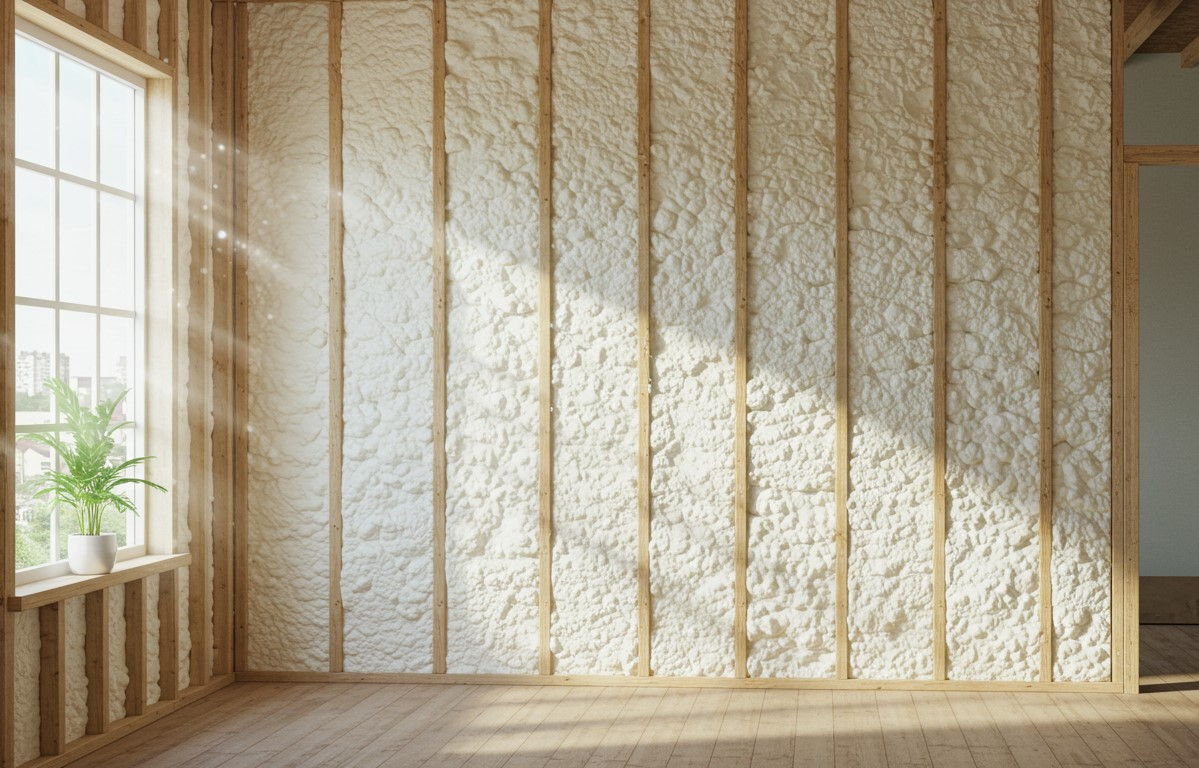Spray foam insulation improves indoor comfort in both hot and cold climates by sealing air leaks and reducing thermal transfer. It minimizes temperature swings, increases HVAC efficiency, and controls humidity levels throughout the year. Closed-cell foam provides a moisture barrier and structural rigidity, while open-cell foam excels in sound dampening and flexibility in wall cavities.
In climates with extreme temperatures, maintaining a stable indoor environment often means high energy use. Spray foam creates a continuous insulation layer that addresses this directly. Unlike traditional materials like fiberglass or cellulose, it expands to fill cracks, voids, and gaps—preventing outside air from entering and conditioned air from escaping.
Experience from field installations confirms this: homes and commercial spaces treated with spray foam consistently report reduced heating and cooling loads, fewer indoor drafts, and quieter indoor environments. This overview breaks down the functional benefits, performance data, and key factors that influence the decision-making process.
How It Works Across Climates
Temperature Regulation
Spray foam reduces temperature variability by forming an airtight seal. This is especially beneficial in high desert regions like Idaho, where temperatures can swing drastically between day and night.
Bonus Tip: In older homes, applying closed-cell foam to rim joists and attic slopes often delivers the most immediate comfort improvement.
[Image: Cross-section of a roof with spray foam insulation in hot and cold layers]
Humidity Control
In humid summers or frigid winters, spray foam helps maintain consistent indoor humidity levels. Closed-cell foam limits vapor diffusion, while open-cell foam slows down moisture migration.
Regional Efficiency Gains
Idaho homes with closed-cell foam in crawl spaces and open-cell foam in attics experience an average 30-50% reduction in HVAC runtime, according to energy audits performed by third-party firms (Source: Idaho Energy Resource Authority, 2023).
Comparison Table: Spray Foam vs Traditional Insulation
| Feature | Spray Foam (Open/Closed) | Fiberglass Batts | Cellulose Blown-In |
|---|---|---|---|
| Air Sealing | Excellent | Poor | Fair |
| R-Value per Inch | 3.5 – 7 | 2.9 – 3.8 | 3.2 – 3.8 |
| Moisture Resistance | High (Closed-cell) | Low | Moderate |
| Sound Dampening | High (Open-cell) | Low | Moderate |
| Mold Resistance | High | Low | Moderate |
| Structural Reinforcement | Yes (Closed-cell) | No | No |
| Lifespan | 30+ years | 10-25 years | 20-30 years |
| Upfront Cost | Higher | Lower | Moderate |
Technical Specs
| Characteristic | Open-Cell Foam | Closed-Cell Foam |
|---|---|---|
| R-Value (per inch) | 3.5 – 3.9 | 6.0 – 7.0 |
| Water Permeability | Semi-permeable | Impermeable |
| Expansion Rate | ~100x original volume | ~30x original volume |
| Density | ~0.5 lb/ft³ | ~2.0 lb/ft³ |
| Vapor Retarder? | No | Yes |
| Application Thickness | 3-5 inches typical | 1-2 inches typical |

Things to Consider Before Making a Decision
- Climate Zone: Closed-cell foam performs better in regions with temperature extremes and humidity fluctuations. Open-cell works well in moderate climates or as an interior sound barrier.
- Structure Type: For metal buildings or pole barns, closed-cell is preferred due to its rigidity and moisture resistance.
- Budget: Open-cell foam is more cost-effective per inch but requires greater thickness for similar insulation value.
- Ventilation Strategy: Sealed buildings may require mechanical ventilation systems (ERV/HRV) to manage air quality.
Bonus Tip: When insulating existing homes, conduct a blower door test before and after installation to measure improvements in air tightness.
Services from Valley Spray Works That Improve Comfort
- Open-Cell Spray Foam: Flexible, high-expansion foam ideal for interior walls and attic applications.
- Closed-Cell Spray Foam: Dense, rigid insulation with a high R-value and vapor resistance; suited for roofs, crawl spaces, and basements.
- Spray Foam Roof Insulation: Adds both insulation and waterproofing in a single application; especially effective in flat or low-slope roofs.
- Thermal Insulation Coating: Applied to surfaces to reduce thermal bridging and heat absorption, improving comfort in metal or industrial buildings.
Common Questions Before Choosing Spray Foam
What type of spray foam works best for my attic?
Open-cell foam is typically better for attics due to its expansion rate and sound absorption. Closed-cell may be needed if moisture is a concern.
How thick should spray foam insulation be?
Closed-cell is typically applied at 1-2 inches per layer. Open-cell may require 3-5 inches depending on local code and insulation goals.
Can spray foam help with noise control?
Yes. Open-cell foam significantly reduces airborne sound transmission between rooms or floors.
Will spray foam affect HVAC sizing?
Yes. Spray foam reduces thermal load, often allowing smaller or more efficient HVAC systems. Consult an HVAC technician for accurate sizing post-installation.
Get Expert Insulation Guidance
Contact Valley Spray Works for trusted insights and professional service. Whether it’s improving year-round comfort or solving moisture issues, proper insulation makes a measurable difference.
Phone: (208) 539-5281 Email: [email protected]
Frequently Asked Questions
How long does spray foam insulation last?
It typically lasts over 30 years without significant degradation or need for replacement.
Is spray foam safe indoors?
Once cured, spray foam is inert and safe. Installers use protective gear during application to manage off-gassing.
Can insulation be installed over old fiberglass?
Yes, but only if the old insulation is dry, mold-free, and doesn’t obstruct spray foam adhesion.
How soon can the area be used after installation?
Most spaces are safe for re-entry 24 hours after installation, depending on ventilation and cure time.
Does spray foam prevent pests?
While not a pesticide, closed-cell foam seals gaps that pests commonly use to enter, making infestations less likely.



